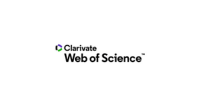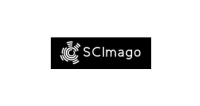CICATRIZAÇÃO SECUNDÁRIA EM FERIDAS DERMOEPIDÉRMICAS TRATADAS COM ÁCIDOS GRAXOS ESSENCIAIS, VITAMINAS A e E, LECITINA DE SOJA E IODO POLIVINILPIRROLIDONA EM CÃES
DOI:
https://doi.org/10.5380/avs.v9i1.4040Palavras-chave:
Cicatrização, ácidos graxos essenciais, lecitina de soja, iodo polivinilpirrolidona, cão, Healing, essential fatty acids, soy lecithin, povidone-iodine, dog.Resumo
Com o objetivo de avaliar os efeitos da solução contendo ácidos graxos essenciais, lecitina de soja e vitaminas A e E sobre a cicatrização secundária de feridas dermoepidérmicas, observou-se a evolução da reparação tecidual em nove cães machos, SRD, com idade variando entre três e cinco anos e peso de 12 kg em média. Para isto, em cada paciente foram produzidos dois defeitos de pele, medindo 6cm de altura (sentido dorsoventral) x 4cm de largura (sentido craniocaudal) em ambas as faces laterais do tórax e do abdome, sendo que nas lesões do lado esquerdo procedeu-se a avaliação física e mensuração diária, enquanto que nas feridas do lado direito, realizou-se biópsia incisional a cada dois dias. Nas lesões abdominais esquerdas, tratadas com ácidos graxos e curativos úmidos com solução fisiológica 0,9%, tanto macro como microscopicamente, observou-se inflamação aguda durante os três primeiros dias, sendo esta seguida pelos eventos de granulação, contração e reepitelização completa até o 25º dia. Nas feridas torácicas esquerdas, expostas ao iodo polivinilpirrolidona e curativos úmidos, constatouse a predominância dos eventos inflamatórios agudos por sete dias, seguida dos fenômenos proliferativos, de contração e completa reepitelização até o 31º dia pós cirúrgico. A ausência de sinais compatíveis com toxicidade sistêmica e a mais rápida cicatrização das lesões tratadas com ácidos graxos, permitem a indicação desta solução para o tratamento de feridas abertas dermoepidérmicas, em cães.
Secondary cicatrization in dermoepidermal wounds treated with essential fatty acids, vitamins A and E, soy lecithin and polynylpyrrolidone-iodine in dogs
Abstract
The effects of a solution containing essential fatty acids, soy lecithin and vitamins A and E in the healing of canine second intention dermoepidermal wounds were evaluated. In order to observe evolution of the tissue repair. Nine male, mixed breed dogs, with age varying between three and five years and average weight of 12 kg, were used in the experiment. Skin wounds were surgically performed in each dog. Two defects (6 x 4 cm) were performed in both thoracic and abdominal lateral faces of the animals. Daily physical evaluation and measurement were analyzed in the lesions situated on the left side, while incisional biopsy every other day was performed in the right side lesions. The left abdominal lesions, treated with fatty acids and humid curatives with physiologic solution 0.9 %, showed macro and microscopic changes such as acute inflammation during the firs three days. After this period and until the 25th day, granulation tissue followed by contraction events and total reepitelization were observed. The left thoracic lesions, treated with povidone-iodine and humid curatives, showed predominance of acute inflammatory events during the first seven days; these events were followed by proliferative and contraction events and by the total recovery of the epithelial surface until the 31st day after the surgery. In conclusion, the absence of compatible signs with systemic toxicity and the fastest healing of the lesions treated with fatty acids allow its indication for dermoepidermal wound treatment in dogs.
Downloads
Como Citar
Edição
Seção
Licença
Autores que publicam nesta revista concordam com os seguintes termos:
- Autores mantém os direitos autorais e concedem à revista o direito de primeira publicação, com o trabalho simultaneamente licenciado sob a Creative Commons - Atribuição 4.0 Internacional que permite o compartilhamento do trabalho com reconhecimento da autoria e publicação inicial nesta revista.
- Autores têm autorização para assumir contratos adicionais separadamente, para distribuição não-exclusiva da versão do trabalho publicada nesta revista (ex.: publicar em repositório institucional ou como capítulo de livro), com reconhecimento de autoria e publicação inicial nesta revista.
- Autores têm permissão e são estimulados a publicar e distribuir seu trabalho online (ex.: em repositórios institucionais ou na sua página pessoal) a qualquer ponto antes ou durante o processo editorial, já que isso pode gerar alterações produtivas, bem como aumentar o impacto e a citação do trabalho publicado.













